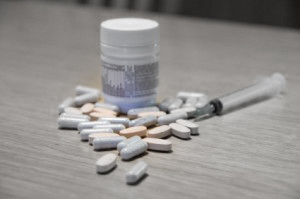 Experience in the drug rehabilitation treatment field has taught that it can be very difficult to keep drugs and drug use out of a treatment facility. Just by the nature of drug addiction itself, and due to the cravings and compulsions of the addicts to acquire the drugs they are desperate for, it becomes an ongoing situation requiring consistently effective actions to keep a treatment facility safe and drug-free.
Experience in the drug rehabilitation treatment field has taught that it can be very difficult to keep drugs and drug use out of a treatment facility. Just by the nature of drug addiction itself, and due to the cravings and compulsions of the addicts to acquire the drugs they are desperate for, it becomes an ongoing situation requiring consistently effective actions to keep a treatment facility safe and drug-free.
The Nature of Addiction
Addiction is notoriously difficult to overcome, and according to statistics from the National Institute on Drug abuse, 40% to 60% of those who receive treatment for their drug addiction—relapse. That translates to 40 to 60 people out of every 100 seeking to kick their habit and live drug-free don’t make it. That translates to a lot of suffering, degradation, broken lives, drug-related crime and heartbreak. That translates to a multitude of broken dreams; destroyed creativity and lives never lived as they were intended to be lived.
According to a former director of Minnesota’s Department of Human Health Services Alcohol and Drug Abuse Division, those who are addicted “will go to great lengths” to obtain their drug of choice. And that those who work in the field of drug rehabilitation treatment know that those addicts will also attempt to persuade their former dealers, their friends and even their family members to smuggle drugs into the rehab treatment facility for them to use.
Recent examples of rehabilitation treatment centers dealing with the problem of drugs and drug use within the facility include the very famous and high-profile Betty Ford Center in Rancho Mirage, California. One young woman recently reverted to heroin shortly after entering the program there, reporting that a fellow client provided the heroin which was smuggled in during a Sunday visitor’s day. She also reported witnessing a drug deal at the center.
A spokesman for the Betty Ford Center, Russ Patrick, issued a statement that the center “has zero tolerance” for on-campus drug use, adding that in the Betty Ford Center’s 31-year history only a very small number of the many thousands of addicts treated at the center have tried to bring or get drugs onto the center campus.
The current president of the Minnesota educational organization, Drug Abuse Dialogues, noted that the stories of desperate addicts and what they will do to get drugs into a facility are nothing new in the rehabilitation treatment field. He added that it is an issue that every rehab treatment center has to deal with.
How to Keep Drugs Out
It is a given that drug rehabilitation centers must take effective steps to keep drugs out of their facilities and out of the hands of the addicts in their care. Part of taking affective action entails the correct estimation of the effort required to keep those drugs out. With very desperate and very resourceful addicts creating and devising the means and ways to bring them into a facility, the facility itself must match and better those efforts to effectively keep the drugs out, and the facility safe and secure.
Generally successful steps taken include comprehensive and well-known policies and procedures to keep the contraband out of a rehab center center, including searches of the clients and their rooms and possessions as well as both routine and unannounced drug testing. It also includes ensuring the staff of the facility are themselves ethical and clean as regards drugs and drug use, determined by careful screening, thorough and very extensive background checks as well as regular employee drug testing. Another successful step is to employ and use a highly trained security team, as well as drug dogs trained in the detection and locating of drugs.
Narconon Arrowhead
Narconon Arrowhead has extensive and longtime experience in keeping drugs out of the facility, and keeping it safe for those on the program working to get sober. In addition to the standard protocols of security guards, routine and random drug testing of clients, employee drug testing, and drug dogs as needed, Narconon Arrowhead has installed a new security system, and implemented a program of standard training for their security guards as well as a special program of training on the indications of drug use for all staff. With heightened measures of prevention, and easier access to drugs it is essential to continue to increase security in rehab to keep drugs away from addicts.